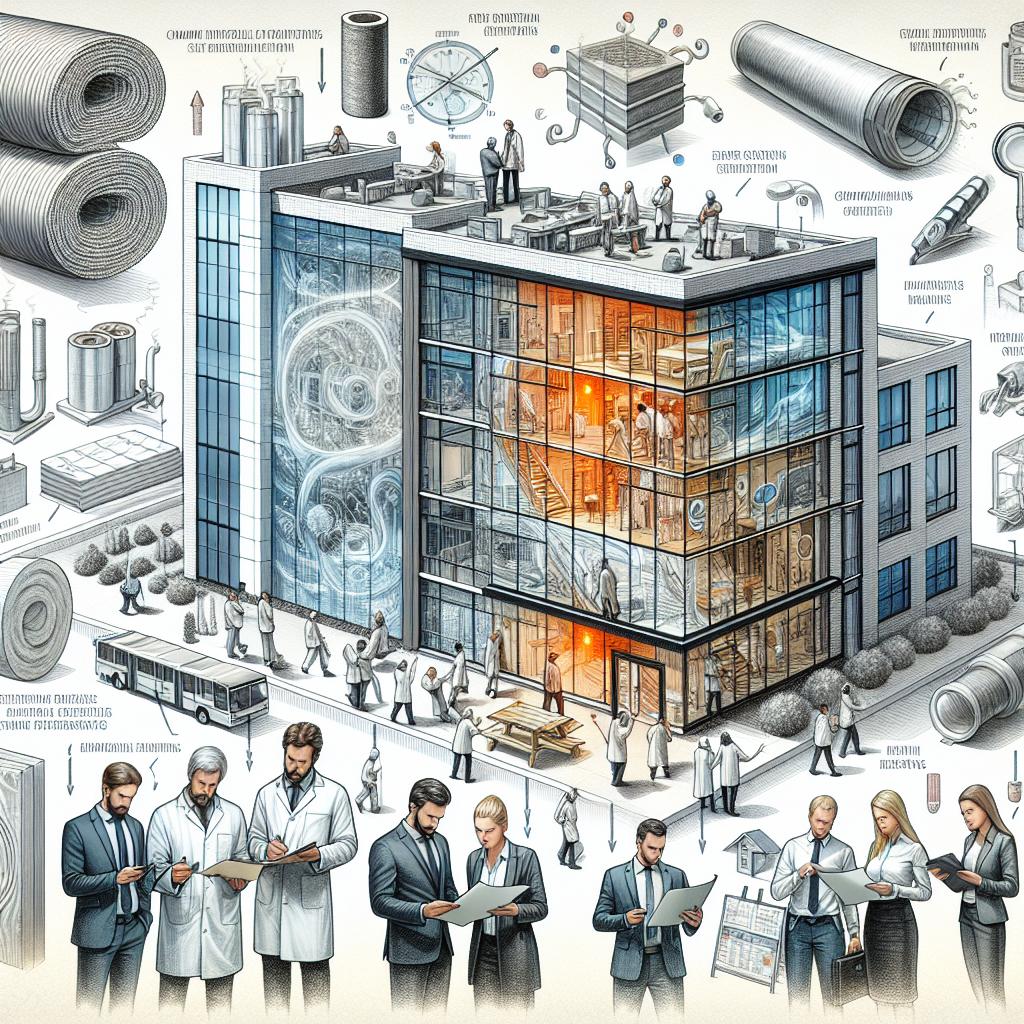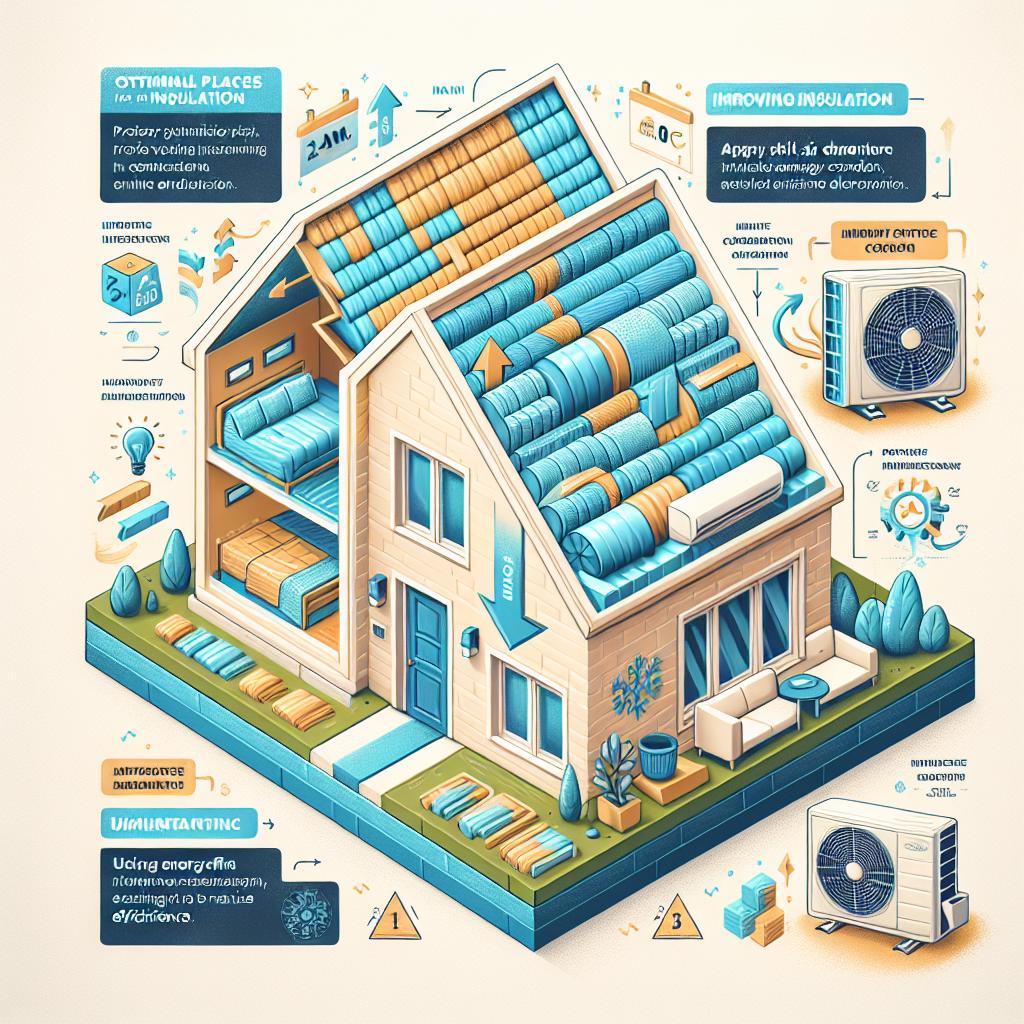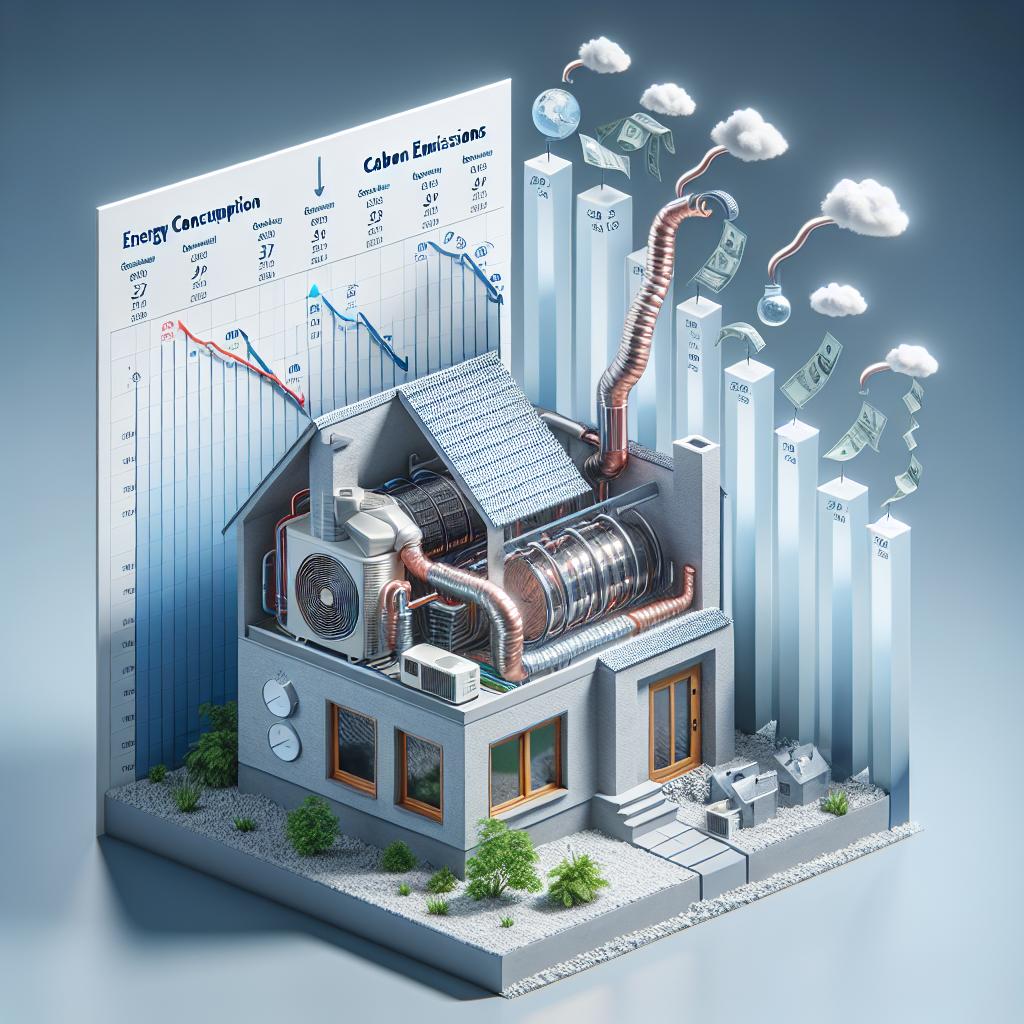In the intricate dance of temperature control, commercial spaces face a unique challenge: maintaining a comfortable environment while adhering to energy efficiency standards. As businesses strive to create welcoming atmospheres for employees and clients alike, the significance of proper insulation emerges as a silent yet powerful ally. Particularly when paired with mini split air conditioning systems—known for their efficiency and flexibility—effective insulation can make a world of difference. This article delves into the vital role that insulation plays in maximizing cooling efficiency, exploring how the right materials and techniques can not only enhance comfort levels but also protect the bottom line. As we uncover the interplay between insulation and mini split AC units, we aim to provide valuable insights that empower business owners to harness the full potential of their cooling systems while creating sustainable, efficient spaces.
Understanding the Role of Insulation in Cooling Performance of Mini Split Systems
Understanding how insulation interacts with mini split systems is crucial for achieving optimal cooling performance. Insulation acts as a barrier, minimizing heat transfer between the conditioned interior and the external environment. A well-insulated commercial space not only reduces the load on the mini split system but also enhances its cooling capacity, allowing it to maintain comfortable temperatures with reduced energy consumption. Factors such as insulation type, thickness, and installation quality significantly influence the system’s efficiency. Some common insulation materials include:
- Fiberglass
- Foam board
- Spray foam
- Mineral wool
Inadequate insulation can lead to air leaks, which directly compromise the performance of mini split systems. Air leaks create hotspots and cold drafts, making it challenging for the system to maintain a consistent temperature. To ensure maximum efficiency, it’s vital to evaluate areas prone to heat loss or gain, such as walls, ceilings, and floors. Utilizing a combination of effective insulation techniques can dramatically influence the comfort levels within a commercial space. Here’s a simplified comparison of commonly used insulation materials based on their R-values:
| Insulation Type | R-Value per Inch |
|---|---|
| Fiberglass | 2.9 – 4.3 |
| Foam Board | 4.0 – 6.0 |
| Spray Foam | 6.0 - 7.0 |
| Mineral Wool | 3.0 – 3.7 |

Identifying Common Insulation Challenges in Commercial Spaces
In commercial spaces, insulation is often overlooked, leading to a host of challenges that can significantly impact energy efficiency. Inadequate insulation can result in temperature fluctuations, increased energy consumption, and discomfort for occupants. Common issues include:
- Thermal bridging: Occurs where insulated areas meet non-insulated materials, leading to energy loss.
- Moisture accumulation: Poor insulation can trap moisture, leading to mold growth and structural damage.
- Air leaks: Gaps in insulation create pathways for outside air to enter, making HVAC systems work harder.
Moreover, the placement and quality of insulation materials play a crucial role in the effectiveness of mini-split AC systems. A well-insulated space supports uniform cooling, improving the system’s efficiency. Key factors to consider include:
| Factor | Importance |
|---|---|
| Insulation Type | Different types impact R-value and energy efficiency. |
| Installation Quality | Proper installation reduces air leaks and moisture issues. |
| Building Envelope Integrity | A strong envelope maintains temperature and protects from external elements. |

Best Practices for Enhancing Insulation to Optimize Mini Split AC Efficiency
To achieve peak performance from your mini split air conditioning system, enhancing insulation within your commercial space is crucial. Proper insulation minimizes air leaks and maintains an even temperature, allowing your AC unit to work more efficiently. Here are some best practices to consider:
- Seal Air Leaks: Use weather stripping and caulk to seal gaps around windows, doors, and other entry points to prevent cool air from escaping.
- Insulate Ductwork: If your mini split system uses ducting, ensure that it is insulated to reduce energy loss as air travels through the ducts.
- Install Reflective Barriers: Apply reflective barriers in attics or walls to reflect heat away, keeping your spaces cooler.
- Maintain Your Insulation: Regularly inspect and maintain insulation materials to ensure they are in optimal condition.
Implementing these strategies can lead to significant energy savings and improved comfort in your commercial environment. The following table outlines the typical R-values for different types of insulation, helping you make informed decisions on which materials to use:
| Insulation Type | Typical R-Value |
|---|---|
| Fiberglass Batts | R-13 to R-38 |
| Spray Foam | R-15 to R-30 |
| Rigid Foam Board | R-5 to R-10 |
| Cellulose | R-3.5 to R-4 |
By selecting the right insulation materials and following these best practices, you can significantly enhance the efficiency of your mini split AC systems, creating a more comfortable and energy-efficient commercial space.

Long-Term Benefits of Investing in Quality Insulation for Cooling Systems
Investing in high-quality insulation for cooling systems plays a critical role in the long-term performance of mini split AC units in commercial spaces. Quality insulation not only minimizes heat transfer, ensuring that the cool air remains within the desired area, but also significantly reduces energy consumption. Over time, businesses can expect a substantial decrease in energy bills, which translates to increased profitability. Furthermore, this investment contributes to a more sustainable operation, as energy-efficient systems lower the carbon footprint, aligning with the growing emphasis on environmentally responsible practices in the commercial sector.
In addition to energy savings, quality insulation aids in enhancing the longevity of cooling equipment. By maintaining a stable temperature and reducing wear and tear on mini split systems, businesses extend the life cycle of their HVAC equipment. This leads to fewer repair costs and reduced downtime, which can directly impact productivity. The benefits of quality insulation can also be reflected in employee comfort and satisfaction, as optimal temperature control creates a more pleasant working environment. Effective insulation ensures that businesses can capitalize on the advantages of their cooling systems long into the future.
Q&A
Q&A: The Importance of Proper Insulation for Maximized Cooling Efficiency in Commercial Spaces with Mini Split AC
Q1: Why is proper insulation crucial for cooling efficiency in commercial spaces?
A1: Proper insulation acts as a barrier, preventing unwanted heat exchange between the interior and exterior of a building. Without effective insulation, cool air generated by your mini-split AC can escape, forcing the system to work harder and consume more energy. This not only inflates utility bills but also shortens the lifespan of the AC unit.
Q2: How does insulation affect the performance of mini-split air conditioning systems specifically?
A2: Mini-split AC systems are designed to cool specific zones within a commercial space. When insulation is insufficient, temperature imbalances occur, leading to inefficient cooling in certain areas. Proper insulation ensures that each zone maintains its desired temperature, allowing the mini-split units to operate optimally without overworking.
Q3: What types of insulation should businesses consider for commercial spaces?
A3: Businesses should look into various insulation types, including spray foam, fiberglass batts, rigid foam boards, and reflective barriers. Each has its strengths depending on the building’s design and location. Spray foam, for example, provides excellent air sealing and energy efficiency, while fiberglass is a cost-effective choice for many commercial applications.
Q4: Can proper insulation lead to energy savings, and if so, how significantly?
A4: Absolutely! Proper insulation can lead to energy savings of 20-30% or more. By reducing the workload on your mini-split AC, insulation translates to lower energy consumption, which can lead to substantial cost savings over time. In the long run, these savings often surpass the initial investment in insulation materials and installation.
Q5: What common insulation mistakes should businesses avoid?
A5: One common mistake is underestimating the importance of air sealing. Even with high-quality insulation, air leaks can significantly compromise efficiency. Another mistake is neglecting to insulate critical areas like ducts, walls, and ceilings, which can lead to hot and cold spots within the building. Lastly, some businesses may opt for cheaper materials, sacrificing performance for upfront savings.
Q6: How can businesses assess whether their current insulation is adequate?
A6: Conducting an energy audit is a great starting point. This can include thermal imaging to detect insulation gaps, inspecting attics and crawl spaces for proper coverage, and checking for air leaks around windows and doors. Consulting with an energy efficiency expert can also provide valuable insights and personalized recommendations.
Q7: What additional benefits does proper insulation provide besides improved cooling efficiency?
A7: In addition to enhanced cooling efficiency, proper insulation contributes to improved indoor air quality by reducing drafts and moisture buildup, leading to a healthier environment. Moreover, it enhances comfort for employees and clients by maintaining consistent temperatures and can also help with soundproofing, leading to a quieter work atmosphere.
Q8: Is it possible to retrofit existing commercial spaces for better insulation, and how?
A8: Yes, retrofitting is both possible and often beneficial. Spaces can be improved by adding insulation to walls and ceilings, sealing ductwork, or using blown-in insulation to fill gaps. External solutions, such as reflective coatings or insulated siding, can also enhance energy efficiency without extensive renovations. Consultation with an insulation contractor can help identify the best approach for your specific needs.
By understanding the importance of proper insulation in conjunction with mini-split AC systems, commercial spaces can maximize their cooling efficiency, reduce costs, and ultimately create a more comfortable environment for everyone involved.
In Retrospect
In the quest for optimal climate control within commercial spaces, the significance of proper insulation cannot be overstated. As we’ve explored, mini split AC systems offer unparalleled flexibility and efficiency, but their performance is heavily influenced by the integrity of the building’s envelope. By investing in proper insulation, business owners not only enhance the comfort of their spaces but also maximize the energy efficiency of their cooling systems, leading to substantial cost savings and a diminished environmental footprint. The interplay between insulation and mini split technology showcases a symbiotic relationship, where each element amplifies the benefits of the other. As we forge ahead in an era where sustainability and efficiency are paramount, prioritizing proper insulation is not just a wise decision—it’s a necessary step towards creating a harmonious and productive environment for both employees and customers alike. Embrace this knowledge, and watch your commercial space thrive amidst the heat of competition.

